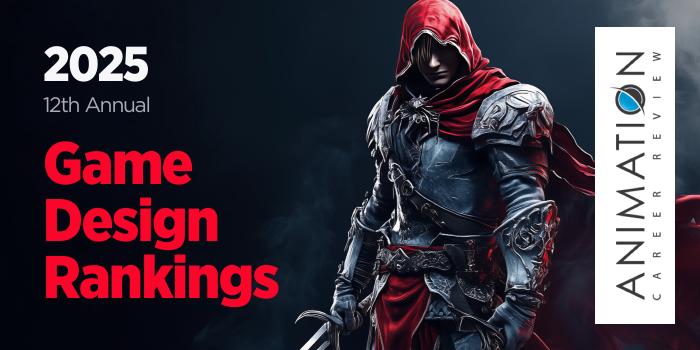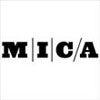
Turn your passion for drawing into a career in film and games with CG Spectrum. Courses include personalized mentorship from award-winning concept artists, career services, and access to a supportive community. Learn more.

| Ranking | School | City |
|---|---|---|
| 1 | University of Maryland, Baltimore County | Baltimore |
| 2 | Maryland Institute College of Art | Baltimore |
| 3 | University of Baltimore | Baltimore |
For an explanation of the ranking criteria, click here.

University of Maryland, Baltimore County (UMBC) is home to the College of Engineering and Information Technology (COEIT). Serving nearly approximately 5,475 students, the college provides more than a dozen programs leading to a BA, BS, MS or MPS. Programs are ABET-accredited, with opportunities to participate in student organizations such as the Game Development Club, Hack UMBC, System Administration and Software Development Club, Retriever Robotics (RR), and Lunix User’s Group.
Across organizations, COEIT students have opportunities to build and play games, network, and innovate. In the Game Development Club, students build several games each year, and coordinate UMBC’s annual Digital Entertainment Conference.
The College of Engineering and Information Technology at UMBC also houses the Computer Science and Electrical Engineering (CSEE) Department. Within the department is the Computer Science (CMSC) program. Leading to a BS, the program has a Game Development track that launched in 2007. The program curriculum combines required technical courses, advanced-level electives, and collaborative game projects.
Required courses include Computer Graphics; Introduction to Artificial Intelligence; Graphics for Games; and Introductory Physics. Elective examples include Software Engineering II; Parallel and Distributed Processing; Computer Networks; Graphical User Interface Programming; and Numerical Computing. The program culminates with the Capstone Games Group Project. In addition to developing an industry-ready game, Capstone students will focus on developing team leadership and project management skills.
Graduates of UMBC's CMSC-Game Development program are prepared to pursue roles in game design and development; animation and film; television production; digital advertising and marketing; architecture; graphic design; simulation and visualization; research and education; and consulting.
Program alumni have gone on to work at companies and studios such as Epic Games, Google, IBM, Apple, Lockheed Martin, Microsoft, Zynga, Bethesda, Abbott Laboratories, Northrop Grumman, Booz Allen Hamilton, Meta, Firaxis Games, AMD, ZeniMax Media, BreakAway Games, Organic Motion, and Stardock Games.
University of Maryland Baltimore County was established as a member of the University System of Maryland in 1966. The school serves approximately 13,905 students enrolled in more than 100 majors, minors, and certificate programs across seven colleges and schools. The University of Maryland Baltimore County is accredited by the Middle States Commission on Higher Education (MSCHE).

Maryland Institute College of Art (MICA) is one of approximately 328 institutions accredited by the National Association of Schools of Art and Design (NASAD). MICA is also home to the Game Lab, which houses the schools Game Design BFA and minor. As part of the Game Lab, students in both programs receive support with game projects and access to partners and resources such as MICA’s Center for Design Practice; the Computer Science Department at Johns Hopkins University's Whiting School of Engineering; and the Institute of Play—a New York-based organization for the research and development of games as teaching tools.
Game Lab students also benefit from partnerships with local game studios such as Big Huge Games and Firaxis Games, and the opportunity to participate in Come Out and Play—an annual international festival for innovative street games and play. Other Game Lab benefits include access to state-of-the-art labs and studios; visiting artists and lecturers; the option to complete an internship or undergraduate teaching assistantship (BFA); and semester and summer study abroad programs.
All MICA students will complete the First Year Experience (FYE), which provides a foundation in art and design. By the end of the experience, students will be prepared to begin upper-level study within MICA’s undergraduate studies (UGS) programs. FYE course examples include Contemporary Visual Languages; Color Design (2D); Ways of Writing; New Media (4D); Forum II: Independent Studio; Drawing (Fundamentals); and Modernisms.
The Game Design BFA consists is 120 credit hours, including 30 FYE; 12 in Art History; 24 in Humanistic Studies; and 54 in the major. Examples of required courses include Game/Play; Introduction to Unity Engine-2D Game Design; Unity Engine 2: Advanced 2D Game Design; Advanced 3D Game Design; Level and Player Experience Design; and 3D Game Design. The program culminates with the Senior Thesis Visual Development course, worth six credits.
Open to students in other majors, the Game Design (studio) minor requires 15 credit hours. Students will take Game/Play and Introduction to Unity Engine-2D Game Design. To reach 15 credits, students will select three courses from a list of eight. Examples include Narrative Design; Level and Player Experience Design; Installation Games; Sound for Games; and Advanced 3D Game Design. The program culminates with a final project.
Graduates of the Game Design BFA program at MICA are prepared to pursue positions in game design, animation and film, digital advertising, science and medicine, museums, education, architecture, research, and consulting. MICA alumni have been hired at companies and studios such as Electronic Arts (EA), Google, Insomniac Games, Sega, Big Huge Games, Sparkypants Studios, Firaxis Games, and Cooper Hewitt, Smithsonian Design Museum at the Andre Carnegie Mansion in Manhattan.
For students seeking a degree that can prepare them for careers in games and other areas such as VR/AR, experience design, and robotics, MICA houses an Interactive Arts (IA) BFA. Course examples include Creative Coding; Interaction as Art; 3D Unity for Artists; Immersive Experience Lab; Sound Art; Robotics Arts Introduction; Synesthesia; the Soundscape; and Immersive/Interactive Studio.
IA BFA Students will also gain professional experience through an internship at places such as Discovery Communications; Digital Harbor Foundation; and the San Francisco Museum of Modern Art (SFMOMA).
The culminating experience for the Interactive Arts BFA program at MICA is the Senior Thesis Visual Development course. Students may produce this final project through the Game Lab or the Animation or Illustration departments. Throughout the course, students will work individually and in teams; interact with visiting artists, critics, and lecturers; and take field trips to places of interest. Final projects will be reviewed in individual and group critiques.
Graduates of the Interactive Arts BFA program at Maryland Institute College of Art are prepared to pursue careers in the games industry, interactive design, digital advertising, fine art, and graphic design, among others. Program alumni have been hired at places such as Pixar, Apple, DreamWorks Animation, Cartoon Network, Google, Firaxis Games, the Museum of Modern Art (MoMA), and Big Huge Games.
Maryland Institute College of Art is the oldest independent, continuously degree-granting college of art and design in the U.S. Serving 2,090 students from 45 states and 53 foreign countries, MICA provides more than 20 different art and design programs leading to a BFA, MA, MFA, MBA, MPS degree, or post-baccalaureate certificate. In addition to NASAD-accreditation, Maryland Institute College of Art is accredited by the Middle States Commission on Higher Education (MSCHE).

University of Baltimore (UBalt) houses Yale Gordon College of Arts and Sciences. Founded in 1937 as the College of Liberal Arts, the Yale Gordon College is home to the GameLab. Founded in 2014 and Funded by The University of Baltimore Foundation, the GameLab is an interdisciplinary research facility that explores the relationships between games, media, and society. A complement to the Simulation and Game Design BS, the GameLab hosts workshops, art exhibitions, and visiting artists.
Game Design BS students also have access to facilities, labs, institutes, and studios such as The Klein Family Center for Communication Design; the Digital Design Studio; Ampersand Institute; the Media Lab; The User Research Lab; the General Science Lab; and SIAT Open Computer Lab.
Established in 2003 and serving more than 120 students across two campuses, the Simulation and Game Design BS (SG BS) is the largest and oldest game design program in the state of Maryland. Also a STEM-designated program, the SG BS has two 15 credit hour specialization options including Technical Art, and Coding and Development. Technical Art includes courses such as 3D Modeling; Advanced Topics in Art and Animation; and 3D Production. Coding and Development consists of courses such as Design for Multiplayer Games; Coding Tools for Designers; and Practical Game Programming.
Students in both areas will take common core courses and study computer programming, applied game design theory, 3D modeling and animation, design of multiplayer games, usability design, and games in education. Core course examples include Introduction to Game Design; Programming for Interactive Design; Frontiers of Game Design; Internet Technologies-Mastering the Basics; Game Scripting; Level Design; Game Concept and Design; Designing for Humans; Graphics for Game Design; Games Criticism; Community-Focused Game Design; Games for Learning; and The Business of Game Development.
The Simulation and Game Design BS Program at University of Baltimore culminates with the Game Development Project I-II courses. Graduates are prepared to pursue advanced roles across the game design industry, interactive design, animation, and the broad technology field.
UBalt alumni have been hired at places such as Microsoft, Apple, Google, Amazon, IBM, Meta, Abbott Laboratories, Instagram, Accenture, Fastspot Creative Agency, Mindgrub Technologies, and idfive.
Founded in 1925, University of Baltimore serves approximately 3,070 students enrolled in more than 70 undergraduate, graduate, doctoral, and certificate programs. The degree programs at UBalt are housed in Yale Gordon College of Arts and Sciences; the College of Public Affairs; Merrick School of Business; and the School of Law. University of Baltimore is accredited by the Middle States Commission on Higher Education (MSCHE).